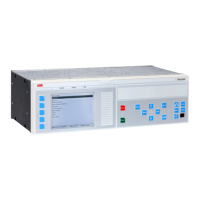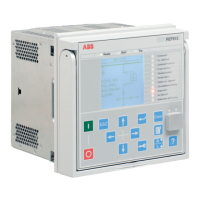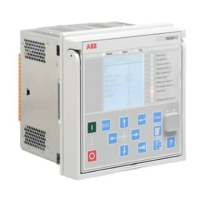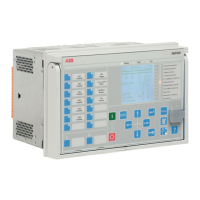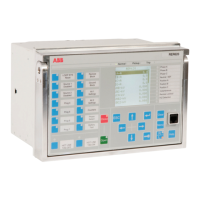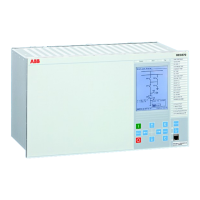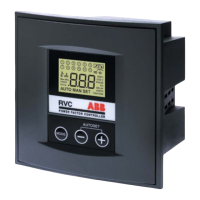1MAC309294-MB F Section 10
General function block features
RER620 545
Technical Manual
protection
The user can define curves by entering parameters into the standard formula:
(Equation 67)
t[s] trip time in seconds
A the set value of
Curve parameter A
B the set value of
Curve parameter B
C the set value of
Curve parameter C
D the set value of
Curve parameter D
E the set value of
Curve parameter E
V measured voltage
V< the set value of
Pickup value
k the set value of
Time multiplier
10.3.2.3 IDMT curve saturation of undervoltage protection
For the undervoltage IDMT mode of operation, the integration of the trip time does not
start until the voltage falls below the value of Pickup value. To cope with discontinuity
characteristics of the curve, a specific parameter for saturating the equation to a fixed value
is created. The Curve Sat Relative setting is the parameter and it is given in percents
compared with Pickup value. For example, due to the curve equation B, the characteristics
equation output is saturated in such a way that when input voltages are in the range from
Pickup value to Curve Sat Relative in percents under Pickup value, the equation uses
Pickup value * (1.0 - Curve Sat Relative / 100) for the measured voltage. Although, the
curve A has no discontinuities when the ratio V/V> exceeds the unity, Curve Sat Relative
is set for it as well. The Curve Sat Relative setting for curves A, B and C is 2.0 percent.
However, it should be noted that the user must carefully calculate the curve characteristics
concerning also discontinuities in the curve when the programmable curve equation is
used. Thus, the Curve Sat Relative parameter gives another degree of freedom to move the
inverse curve on the voltage ratio axis and it effectively sets the maximum trip time for the
IDMT curve because for the voltage ratio values affecting by this setting, the operation
time is fixed, that is, the definite time, depending on the parameters but no longer the
voltage.
10.4 Measurement modes
In many current or voltage dependent function blocks, there are four alternative measuring
principles:
•RMS
• DFT which is a numerically calculated fundamental component of the signal
• Peak-to-peak
• Peak-to-peak with peak backup
ts
kA
B
VV
V
C
D
E
⎡
⎣
⎢
⎤
⎦
⎥
=
⋅
×
<−
<
−
⎛
⎝
⎜
⎞
⎠
⎟
+
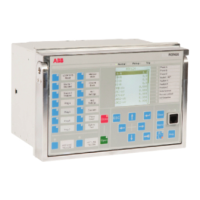
